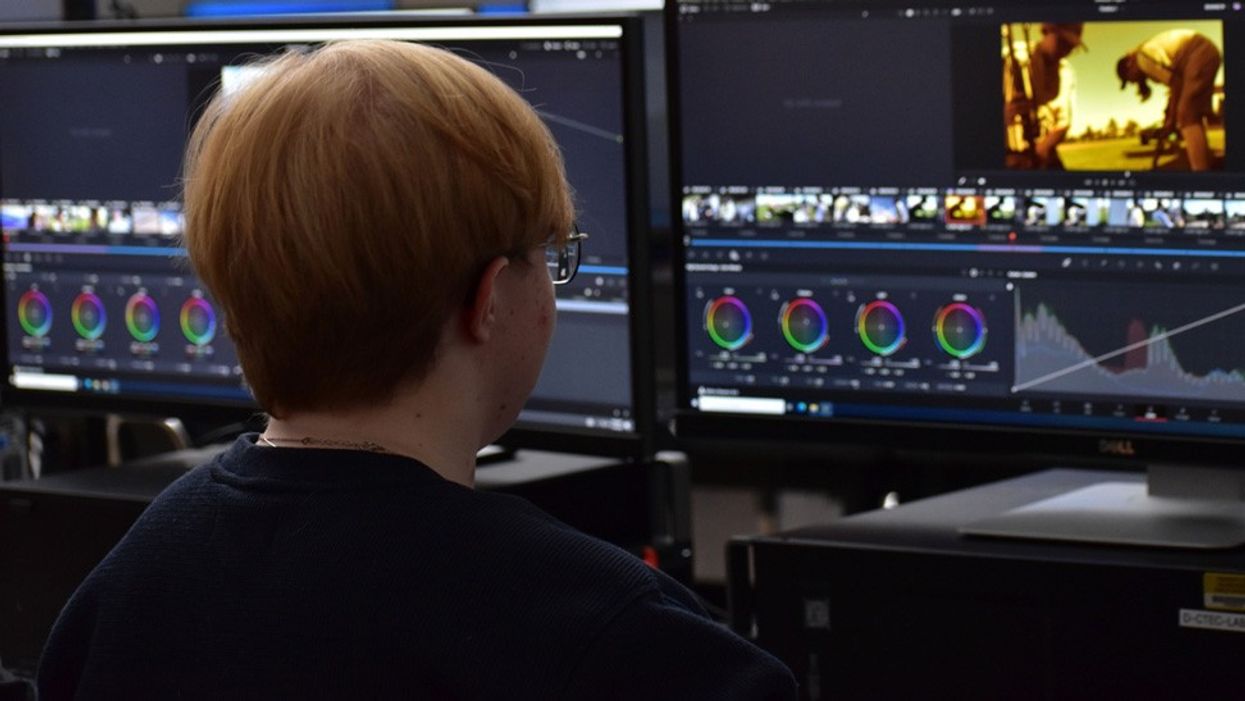Add New Codecs and AI Stabilization with DaVinci Resolve Update 18.6.5
Here’s everything new coming to DaVinci Resolve, including new codecs, AI, and support for the upcoming Sony BURANO

DaVinci Resolve Update 18.6.5
Blackmagic Design’s DaVinci Resolve is truly an ever-evolving video editing software. And while you could say that about all video editing apps like Premiere Pro and Final Cut as well, DaVinci Resolve is perhaps the most ever-changing.
With what feels like dozens of updates already this year (or at least over the past three to six months), Resolve is always improving, upgrading, and adding new tools and features. This latest update (version 18.6.5) is no different as Resolve is set to get new codecs, some spicy new AI stabilization for more cameras, and support for the upcoming release of the Sony BURANO.
Let’s take a look at everything new coming to DaVinci Resolve 18.6.5.
DaVinci Resolve Update 18.6.5
As mentioned above, the biggest news here is the support for new codecs and file types coming to DaVinci Resolve. Of course, Resolve will offer support for Blackmagic’s own BRAW 3.6.1 format now. Still, Resolve is also adding some brand new abilities to import X-OCN clips out of the upcoming Sony BURANO as well.
DaVinci Resolve 18.6.5 is also adding support for AI stabilization which can be added to any footage shot with cameras like the Blackmagic Cinema Camera 6K or the Blackmagic Micro Studio Camera 4K G2. This AI stabilization will make use of the built-in motion sensor that records data on how much the camera pans, tilts, or rolls and can use those numbers to help stabilize in Resolve Studio.
It’s also cool to see that more features and changes are coming to the color page, too. When adding EXR mattes to clips the nodes will now default to the layer names in the metadata of the original file. This will help streamline your editing process and help you keep things a bit more organized in Resolve moving forward.
Everything Else New Coming to Resolve
Those are perhaps the biggest new updates and features coming to DaVinci Resolve 18.6.5. However, as is often the case, there are a host of other smaller changes set to hit Resolve when you download the new update.
Here’s everything new coming to Resolve 18.6.5:
- Import module support for Python 3.12
- The new version key shortcut now works with multiple clip selections
- The new version action now applies correctly on the selected clip
- Curves and HDR zone graphs now displayed correctly in compound nodes
- Addressed an issue with the Fusion fold transition at some resolutions
- Addressed an issue when rotating clips with Resolve FX Depth Map
- Addressed an exposure issue for some media-managed Sony XAVC clips
- Addressed artifacts with Dolby Vision trims on some AMD systems
- Addressed artifacts with ACES transforms on some AMD-based Macs
- Addressed incorrect control ranges in Resolve FX Relight directional mode
- Addressed issue with dynamic project switching from the Fusion page
- Addressed a mesh point update issue changing Fusion grid warp size
- Addressed issue with HDR option visibility in Fusion color space transform
- Addressed media sync issues after bin import or copy in cloud projects
- Addressed audio normalization setting not retained with render presets
- General performance and stability improvements
New Minimum System Requirements
DaVinci Resolve also announced new minimum system requirements for Mac OS, Windows, and Linux computers, which you can find below. And, as always, if you’d like to update Resolve, just check your app or head to the Blackmagic Support Website.
Minimum system requirements for Mac OS:
- macOS 12 Monterey
- 8 GB system memory. 16 GB when using Fusion
- Blackmagic Design Desktop Video version 12.0 or later
- Integrated GPU or discrete GPU with at least 2 GB of VRAM.
- GPU which supports Metal or OpenCL 1.2
Minimum system requirements for Windows:
- Windows 10 Creators Update
- 16 GB of system memory. 32 GB when using Fusion
- Blackmagic Design Desktop Video 10.4.1 or later
- Integrated GPU or discrete GPU with at least 2 GB of VRAM
- GPU which supports OpenCL 1.2 or CUDA 11
- NVIDIA/AMD/Intel GPU Driver version—As required by your GPU
Minimum system requirements for Linux:
- Rocky Linux 8.6 or CentOS 7.3
- 32 GB system memory
- Blackmagic Design Desktop Video 10.4.1 or later
- Discrete GPU with at least 2 GB of VRAM
- GPU which supports OpenCL 1.2 or CUDA 11
- NVIDIA/AMD Driver version—As required by your GPU
- What You Need to Know About the Most Recent DaVinci Resolve 18.5 Beta 3 ›
- How to Copy Color Grades Between Projects in DaVinci Resolve ›
- Learn How to Make a GIF in DaVinci Resolve 18.6 With This Free Looping Plugin ›
- AI-Powered Audio Features in DaVinci Resolve Can Clean Your Dialogue—Should Sound Mixers Worry? ›
- A Colorist’s Perspective: Practical Comparisons of DaVinci Resolve and Apple Color ›
- Blackmagic DaVinci Resolve 18.6 Adds Proxy Generator and C2C Workflow Upgrades ›
- How To Use DaVinci Resolve 18.5’s Powerful New Relighting Tool ›
- Sony BURANO Online Menu Simulator access ›
- Encode New Formats and Manage Media Better With DaVinci Resolve 18.6.6 Update ›
- Blackmagic Camera 8.6 Public Beta ›
- More Improvements Coming to DaVinci Resolve 19 With Public Beta 5 | No Film School ›
- DaVinci Resolve 19.0.2 Offers Improved Audio Alignment and More New Support | No Film School ›
- Blackmagic Desktop Video 14.3 Adds New Camera Extensions in Final Cut Pro | No Film School ›

 Richard Gere and Uma Thurman in 'Oh, Canada' via Kino Lorber
Richard Gere and Uma Thurman in 'Oh, Canada' via Kino Lorber  Uma Thurman in 'Oh, Canada'via Kino Lorber
Uma Thurman in 'Oh, Canada'via Kino Lorber 









